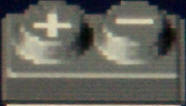 |
More 12 Volts
The Prius has a 12V system that is anemic at best. Non-hybrid vehicles rely on a powerful alternator to charge a big 12V battery, which in turn is relied on for critical functions such as starting the car. Because the Prius has a much bigger traction battery for starting the car and other functions requiring a lot of electricity, the 12V system is much attenuated, with a tiny battery. This can be a handicap when a lot of 12V power is required. Normally this extra 12V power would be used for running such accessories as inverters and communications equipment. While the rest of this PriUPS site handily takes care of the inverter requirement, 12V at hundreds of watts can still be useful, and isn't truly available from the Prius.
While scanning eBay one day, I came across an interesting device from a company called Vicor. This company manufactures power conversion modules, and specializes in DC-to-DC converters. The particular module on offer was a 150 watt module, and it converts 300VDC to 12VDC with good efficiency and 150W output at 12VDC. These modules can be paralleled to increase the power capability. They are also available in 300 and 600W versions. Although the input voltage rating is 300V, they are specified to operate from 375V down to under 200V, i.e., not only will they work at the lowest voltage of the traction battery, they will also work with other hybrids such as the Highlander, that have a higher voltage battery. These modules are amazingly small - they weigh only a few ounces, and measure about 2-1/4" by 1-1/2". They must be mounted on a heat sink, but only generate about 30W of heat at full power.
 |
Here's the module before any connections have been made. This is the first one I got and I had some fun testing it, as you can read in my blog entry here. |
 |
Although communications equipment is normally specified for "12 Volt" operation, the actual operating voltage is normally between 13V and 14V, since this is the nominal battery voltage while it is being charged by the car's alternator. The two resistors at the lower right are calculated to trim the module output voltage up to 13.2VDC. |
| In order to get the desired power for my 100W transceiver a 23A supply is specified, which is almost 300W. To get this power, I paralleled two of the Vicor modules. (The yellow wire connects the PR pins on each module to the other one. This automatically allows them to share the load equally.) | |
 |
The heat sink and fan assembly is one that is normally used to cool a CPU chip on a PC. I had some lying around, and I tapped mounting holes in it and mounted the Vicor modules using 4-40 screws and Berquist Sil-Pads for thermal conductivity. The heat sink and fans normally have to dissipate a lot more power, so the assembly remains cucumbric under load. Note the fuses in each side of the DC line. |
| The power inlet has a makeshift bridge rectifier soldered to the leads. Even though this module can supply 300W at 12V, the input current is negligible from the traction battery - less than 2 amps, so the primary wiring needn't be heavy. The purpose of the bridge rectifier is to protect against reverse polarity and thus allow use of any handy IEC line cord instead of having to carefully paint + and - on one. | |
 |
Here's a close-up of the fan end. Not coincidentally, the fans run on 12V, so I'm powering them from the modules. The connector on the right is for the 13.2V output that goes to the radio equipment. During testing I found that this gets a little warm, implying a bit of a voltage drop. It's best to keep the power supply as close to the load as possible since the heavy current flows on the load side. I'll shorten this cable when I do a permanent installation. |
 |
The plastic case was just something the right size I had lying around. It serves as a makeshift mounting for the power inlet, and as a protector for the circuitry and any hands that would contact it accidentally. For a permanent system it would be better to use a metal enclosure for the whole thing, and punch holes in it for air circulation. |
 |
Here's a side view, with a label I scribbled. The modules are out of sight, so I put the specs where I could see them without disassembly. |
This module assembly is just about right to power any ham radio transceiver that runs on "12V." It weighs well under 2 lbs. There is almost no limit to the amount of power you can get at 12V since multiple modules of different sizes can be connected to the traction battery for different applications. The Prius can easily power an emergency communications setup for a police or fire department!
Updated 17 August 2006